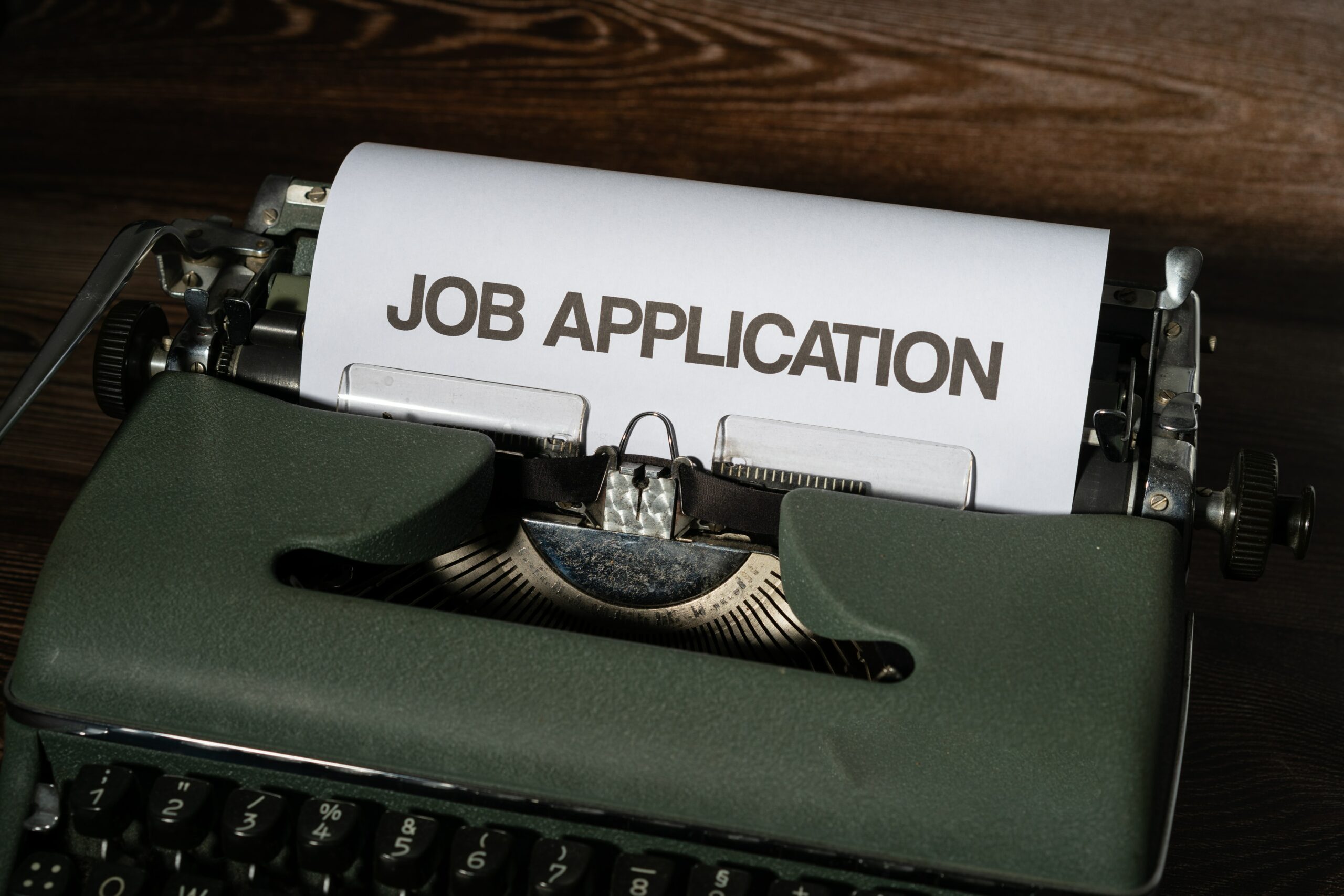In this article:
- Introduction: what is a recruitment process and what is a corporate.
- From choosing the targeted job post to your first interview.
- Advices, tools and templates to help you along the way.
- Heading for the final interview.
- Conclusions and final thoughts.
Introduction
A recruitment process is the method by which a company seeks, selects, and hires new employees, ensuring that the chosen candidates can effectively contribute to the organization’s goals. This process may include posting job openings, conducting interviews, and checking references, and it serves to ensure that candidates not only possess the required skills but also fit into the corporate culture.
The term corporate generally refers to a commercial entity or company that operates across various industries and markets, often characterized by a hierarchical structure and global services and products.
When discussing a recruitment process to join a corporate, one approaches a series of formal and professional practices.
Businesses are typically classified by size in the following categories:
- Micro businesses: Fewer than 10 employees.
- Small businesses: 10 to 49 employees.
- Medium-sized businesses: 50 to 249 employees.
- Large businesses/Corporations: 250 or more employees.
Small and medium-sized enterprises (SMEs) collectively make up over 90% of the number of businesses in most countries, though they don’t account for 90% of employment or business deals.

1. From the job post analysis to your first interview
This summary of my recent job selection process will explain how it concluded. Going through a series of interviews to land a job at a prestigious, globally-recognized, stock market-listed company is a significant achievement. The process was rigorous, but I was confident in my abilities and experience.
Let’s begin! 😃
Everything begins with choosing the job position to apply for, using the search functions that LinkedIn (Jobs) generously offers for free.
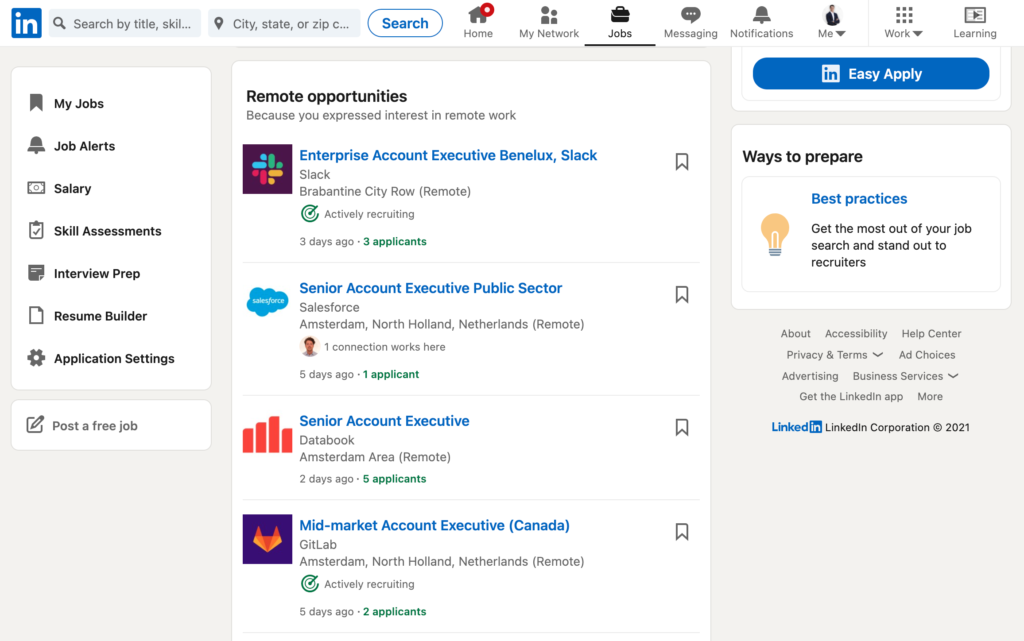
We have carefully screened the job description and can confirm that it aligns perfectly with our career path and work experience.
Specifically, we are excited to apply for the open position of Account Executive for the Italian market based in Amsterdam at a company with 5,000 to 10,000 employees.
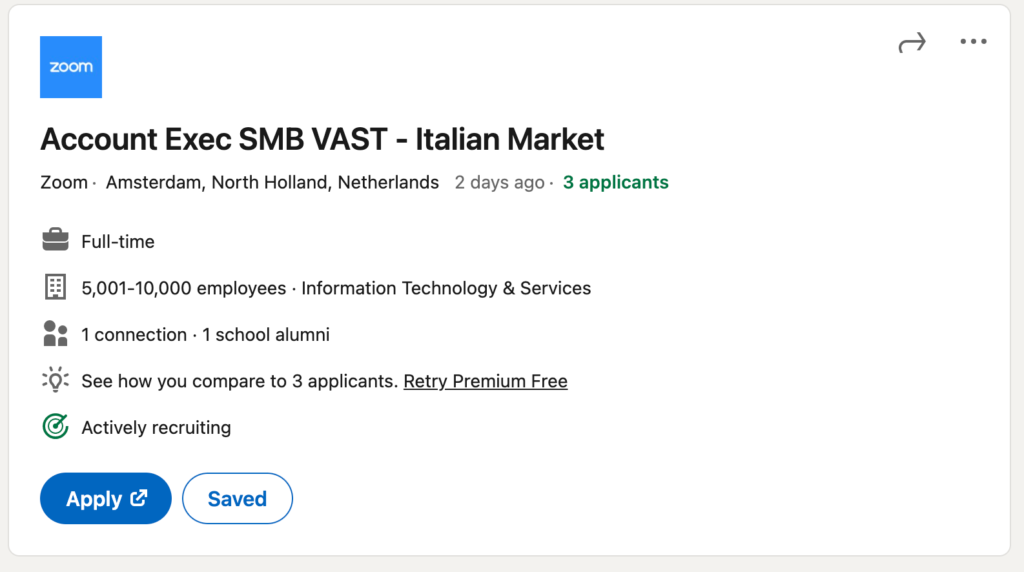
To fully understand the level of detail and precision put into creating the job description, it is crucial to focus on the main points.
The job description for this sales position covers 12 key areas, including daily activities, key contacts, the company’s CRM for managing potential deals and tracking activities, and support activities for acquired clients.
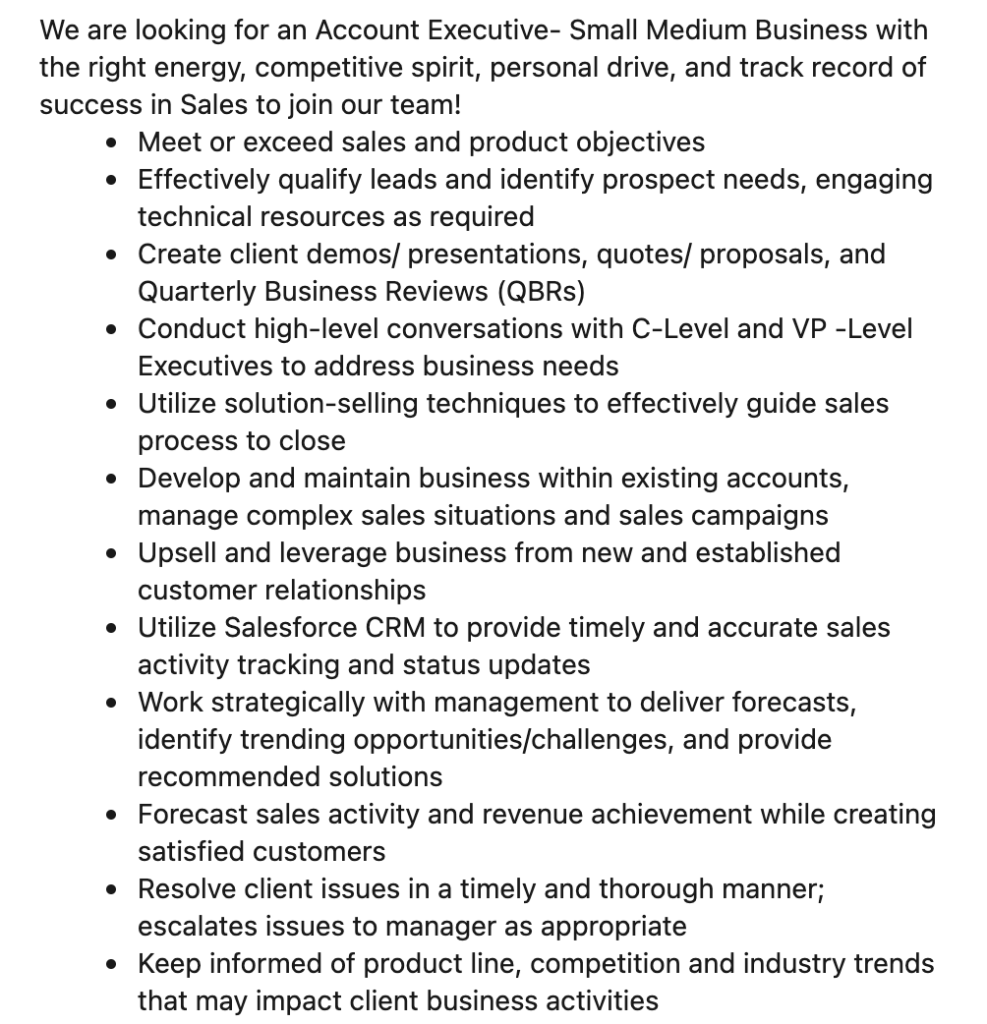
The requirements listed by the company’s recruiters include years of experience in the relevant industry, hard & soft skills needed for the role, the ability to prove past results, and a certified university degree.
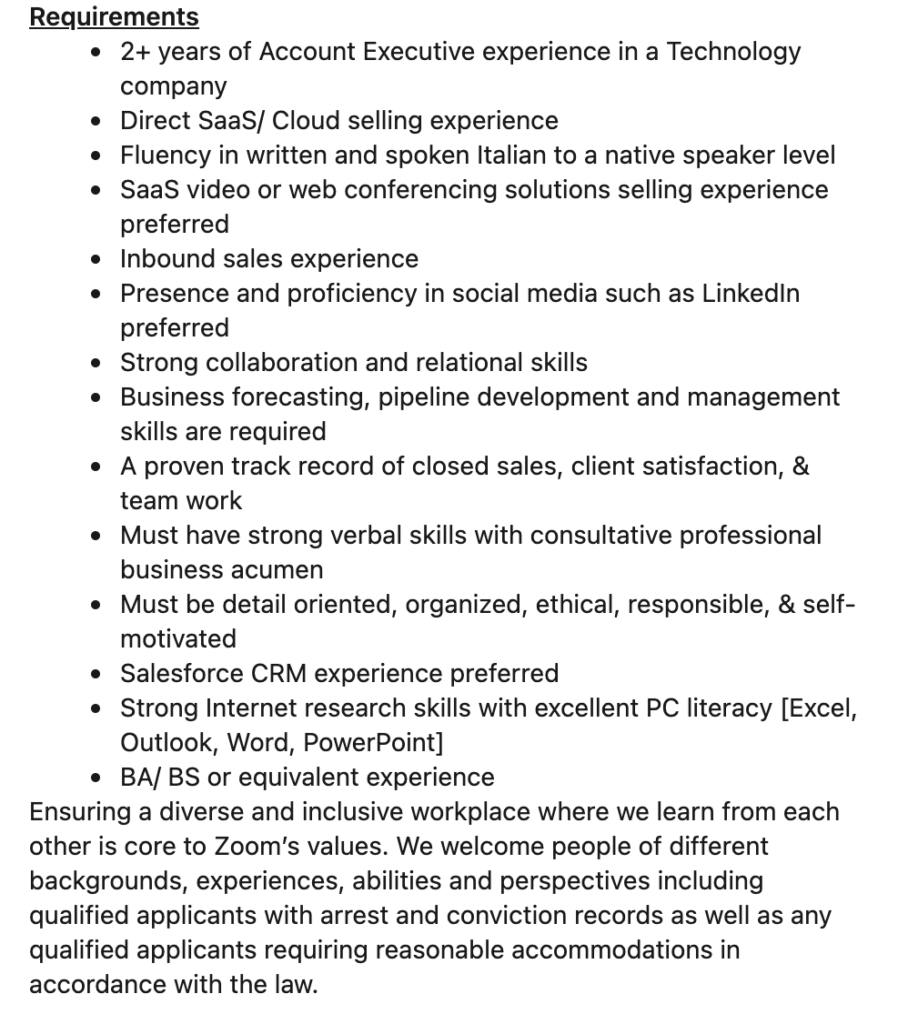
2. Advices, Tools, and Templates to manage the selection process
To secure the position and impress the company, it is crucial to upload a personalized CV that is tailored to the job description. Be sure to include relevant keywords and concrete examples from past work experiences.
I successfully applied this strategy in August 2021 when I customized my CV for a Client Success Associate position and completed the company’s online application form. As a result of my application, I was invited for the first online screening.
When applying for one or more job positions, it is crucial to ask yourself: how will I keep track of developments and necessary follow-ups? Rest assured, with a confident mindset and clear organization, you can easily stay on top of all important updates.
I highly recommend Notion as a tool for efficiently and effectively managing notes and projects. My template for tracking employment opportunities includes important dates on my calendar, outcomes of each selection process, and a link to the job description page for quick reference.
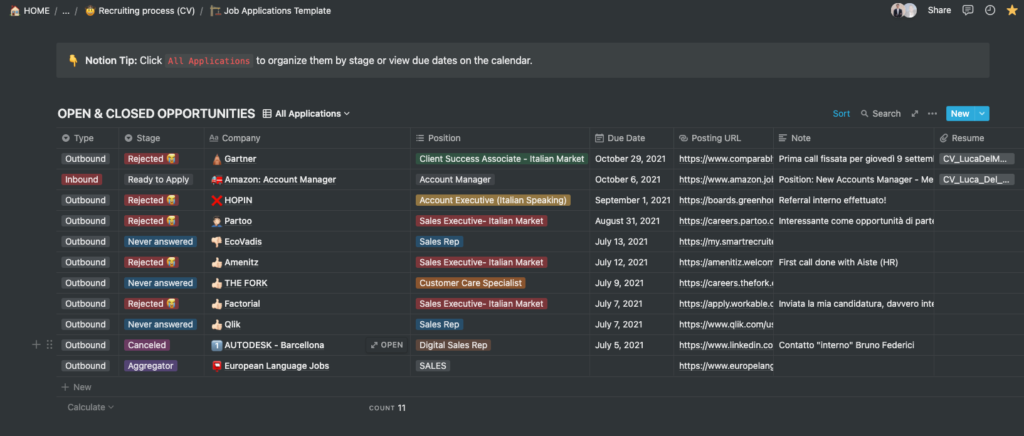
The journey described in this article began with two introductory meetings that took place ten days apart in September. From the outset, I recognized the significance of paying close attention to detail throughout the process. A sequence of interviews with various managers, punctuated by feedback sessions, equipped me for each meeting.
These initial interviews typically consist of standard questions such as “Tell us about yourself“, “Why did you apply?” for the “Job title” at “Company“, and “What is your current employment situation?”.
I felt confident and at ease during these first two 30-minute sessions.
For further guidance, I recommend watching this informative video by Jeff Su on his YouTube channel. He provides expert advice on productivity and career, including strategies for answering complex questions with precision and clarity.
Another quick tip is to use your smartphone during remote interviews to record yourself and listen afterward to identify areas where you were precise and where you need improvement.
Trust me, it can make a difference in the following steps.
3. Towards the final interview
As you progress towards the final conversation that decides if you are going to be selected or not, your intensity and focus should increase with each manager you talk to. It is important to showcase your competence and expertise through well-supported arguments or statements, using clear and concise sentence structures and strong, action-oriented words to articulate your message with the right level of confidence.
You will be discussing with managers who have been with the company for years, occupying specific roles in the business unit you’re applying to, who may have held the position you’re applying for and are now managing a dedicated team in a specific geographic area (EMEA, APAC, MENA, US&Canada).
In my case, I confidently reached the third step in just under two weeks, where I engaged in hour-long discussions with two employees with similar seniority but holding different roles in the company.
During these discussions, we covered important business-related topics. These were the key points of our conversation:
- Evidence of Success – Ability to persevere when faced with challenges and unwilling to accept less than the highest levels of achievement, examples of top 20% performance – academically or professionally;
- People Acumen – Ability to engage other people and develop value-added relationships while going above and beyond for the client and the team; trait encompasses communication, collaboration and service excellence;
- Roadmap to Success – Ability to adopt best practices, follow established processes and embrace feedback with a mind-set of continuous improvement;
- Clock Speed/Intellect – Ability to process and understand information quickly in order to make actionable, intelligent decisions and tie previously unrelated concepts together;
The second crucial question: what approach should you take when responding to questions covering these themes?
Follow the STAR METHOD, which stands for Situation, Task, Action, Result.
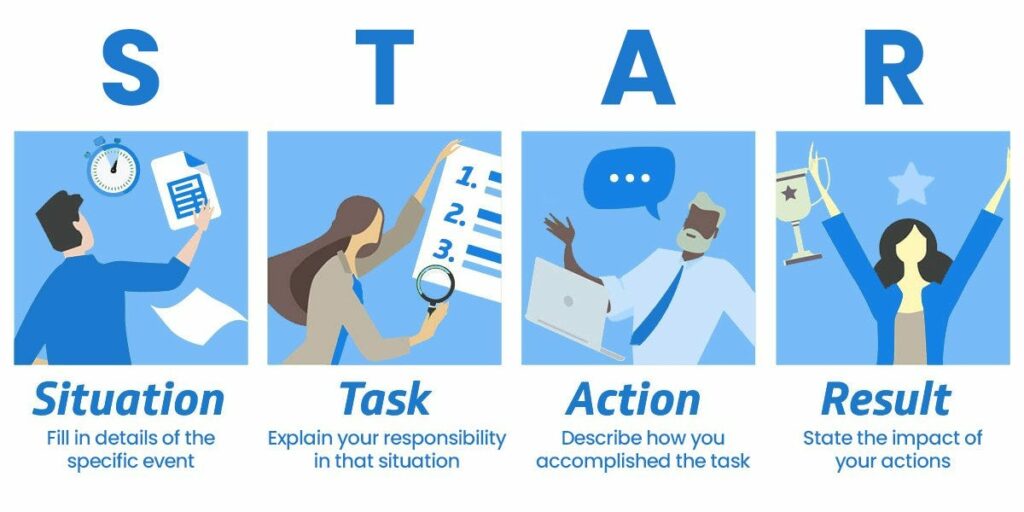
Even in this step, everything was meticulously planned.
My responses were attentively heard, recorded, reiterated during the conversation, and summarized at the end of the interview before bidding farewell.
With the successful completion of the third step, I was officially inducted into the preparation period for the fourth and final interview, scheduled to take place almost two weeks after the third interview.
In the final phase, I prepared a short multimedia presentation that showcased my main interests, educational paths, and hobbies in the first two slides. Then, I confidently defined ‘Why Company name?’ with concrete examples that my future interlocutors could find relevant connections to the position I was competing for.
4. Conclusions and final thoughts
For those who have made it to the end, it’s time to reveal that, unfortunately, the outcome was negative: despite demonstrating excellent synthesis skills in the first steps, a proven background of work experiences often involving soft skills for solving complex problems, showing past examples of being a team player as judged by those who listened to me for an hour and a half during the final interview, there were several moments where I did not meet their expectations.
We’re talking about details regarding: the pauses I used at times to answer one of the many questions presented before arriving at the Role Play, a real-life simulation in this case of a phone call with an already acquired client.
Preparation time: 5 minutes.
In this case, my gaps in understanding the American English of the manager in question penalized me in the final evaluation, leading the other interlocutors to lean towards a negative final judgment.
In the end, when we face such complex selection processes, regardless of the outcome, we are evolving. It’s a real training ground that keeps us prepared to face future meetings, conversation after conversation, until we reach the famous “Green light” often mentioned by actor Matthew McConaughey in his biography (a must-read).
I genuinely hope this read can help some of you facing a similar selection process and that you can extract the best from this article to succeed.
As the English say in these cases: “Break a leg!”
